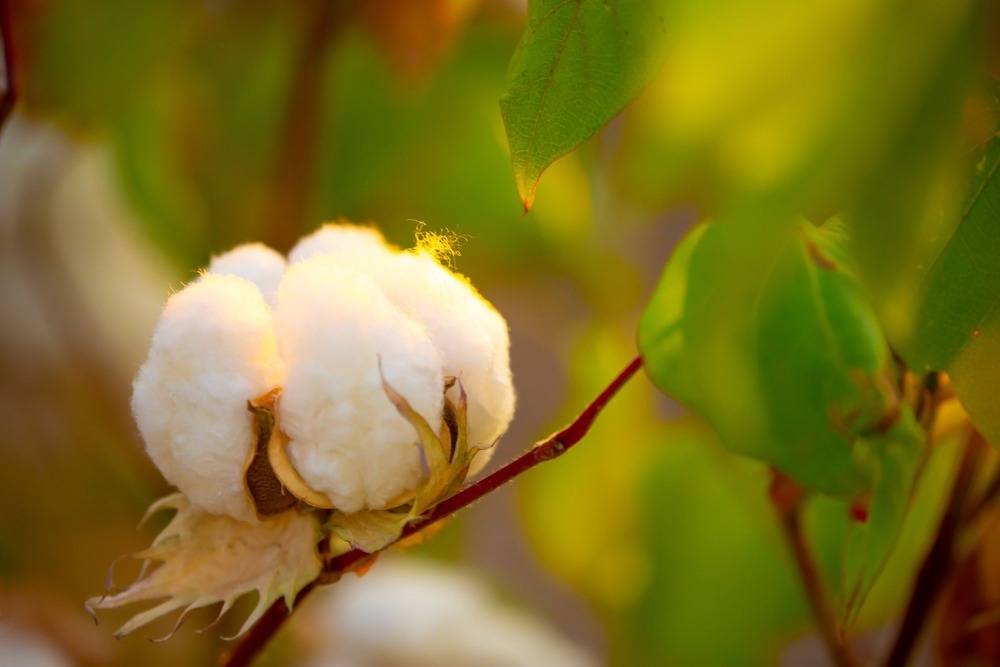 By Surbhi JainReviewed by Susha Cheriyedath, M.Sc.Jun 22 2022
By Surbhi JainReviewed by Susha Cheriyedath, M.Sc.Jun 22 2022In an article recently published in the Journal of Physics and Chemistry of Solids, researchers discussed the impact of particle size of cotton stalks on the structure of biochar and the performance of anodes for lithium-ion batteries.

Study: Effect of cotton stalk particle size on the structure of biochar and the performance of anode for lithium-ion battery. Image Credit: Vera Larina/Shutterstock.com
Background
Lithium-ion batteries (LIB) have become popular for energy storage due to their high energy density, light weight, long lifespan, and lack of pollutants. However, because of the limited capacity of graphite and poor rate performance, LIB development is not possible. Significant efforts are being made to investigate next-generation carbon anode materials in order to increase the performance of LIB.
High specific surface area and a dense pore structure help to increase electrochemical performance, while superior stability helps to lengthen the anode's service life. Activation and doping are two popular processes used in the manufacture of biochar in order to create anode materials with superior electrochemical performance. Recent studies have shown that biomass carbonization with changes in activation and doping improves the structure of biochar by altering mass and heat transport during biomass pyrolysis.
About the Study
In this study, the authors discussed the utility of cotton stalk biochar (CSCs) as a LIB anode material. The impact of particle size on the structural and electrochemical properties of derived carbon materials was studied.
The team used a one-step carbonization method to prepare the samples. Biochar made from cotton stalks with bigger particle sizes was used to retain the tubular structure and aid in the development of pore structure and defect formation.
The researchers employed agricultural waste cotton stalks as precursors to investigate the impact of particle size on the structural and electrochemical attributes of carbonized products. A simple carbonization procedure was used to create a high-performance cotton stalk porous carbon.
Observations
Capacitive distribution increased with scan rate and reached 47.57% at a scan rate of 1 mVs-1. The CSC anodes had reversible capacities of 57.62-130.33 mAhg-1 at a current density of 2 Ag-1, whereas graphite had a capacity of just 30.8 mAhg-1. CSC-1, 2, 3, 4, and 5 had initial specific capacities of 786.5, 872.1, 857.8, 749.85, and 646.1 mAhg-1, respectively, which rapidly dropped during the first discharge/charge operation. C=O, C-OH, C–O–C, and OH had four peaks at 530.9 eV, 531.8 eV, 532.6 eV, and 533.6 eV, respectively, in the high-resolution O1s.
When the cotton stalk particle size was smaller than 200 μm, the structural features of pyrolytic carbon changed significantly, especially the pore size below 4 nm. Carbonized cotton stalk products with particle sizes ranging from 100 to 200 and 450 to 2000 μm achieved the maximum interlayer spacing of 0.388 nm and pore volume of 0.285 cm3 g-1. Meanwhile, the pyrolytic carbon made from cotton stalks with greater particle sizes had a superior tubular structure.
After 100 cycles at 0.1 Ag-1, the biochar made from the cotton stalk with particle sizes ranging from 450 to 2000 μm had the highest Li+ diffusion coefficient of 1.47x10-11 cm2 s-1 and the best electrochemical performance, with a greater specific capacity of 271.7 mAhg-1.
For the structural properties and chemical composition of biochar, the cotton stalk particle size of 200 μm was an essential transformation point. When CSCs were used as anode for LIBs, cotton stalk biochar with a diameter of 450-2000 μm had the best electrochemical performance, with a specific capacity of 271.7 mAhg-1 after 100 cycles at 0.1 Ag-1. At the same time, the high current density of 2 Ag-1 displayed the specific capacity of 115 mAhg-1.
Conclusions
In conclusion, this study elucidated that CSCs had a tubular porous structure, a greater interlayer spacing, and higher hetero-atom doping for lithium-ion storage and transport. Cotton stalks with larger particle sizes promoted the formation of pore structure and the retention of heteroatoms during the pyrolysis process. The structure of biochar could be efficiently controlled by varying the particle size of the cotton stalk, resulting in a future carbon material preparation method that is both low-energy and environmentally benign. The particle size distribution in the biomass precursor had a big impact on the electrochemical performance and structure of biochar.
The authors believe that the screening of precursor particle size is a promising strategy to increase electrochemical performance, and it also presents ideas for other energy storage devices, thanks to the large range of precursors and the cheap and convenient manufacturing procedure.
More from AZoM: Reviewing the Use of Computational NIR Spectroscopy
Disclaimer: The views expressed here are those of the author expressed in their private capacity and do not necessarily represent the views of AZoM.com Limited T/A AZoNetwork the owner and operator of this website. This disclaimer forms part of the Terms and conditions of use of this website.
Source:
Wang, Y., Chang, H., Ma, T., et al. Effect of cotton stalk particle size on the structure of biochar and the performance of anode for lithium-ion battery. Journal of Physics and Chemistry of Solids 110845 (2022). https://www.sciencedirect.com/science/article/abs/pii/S0022369722002736